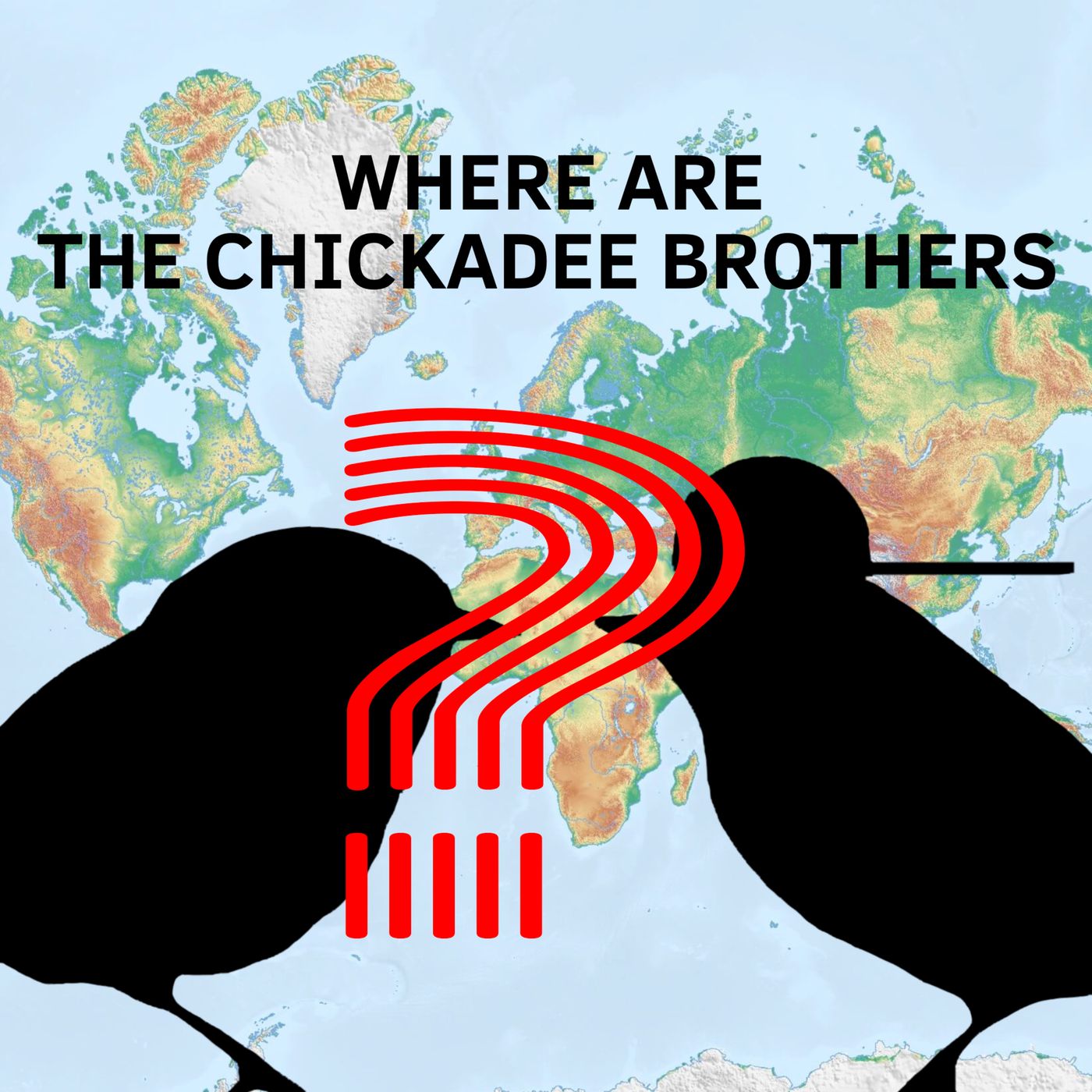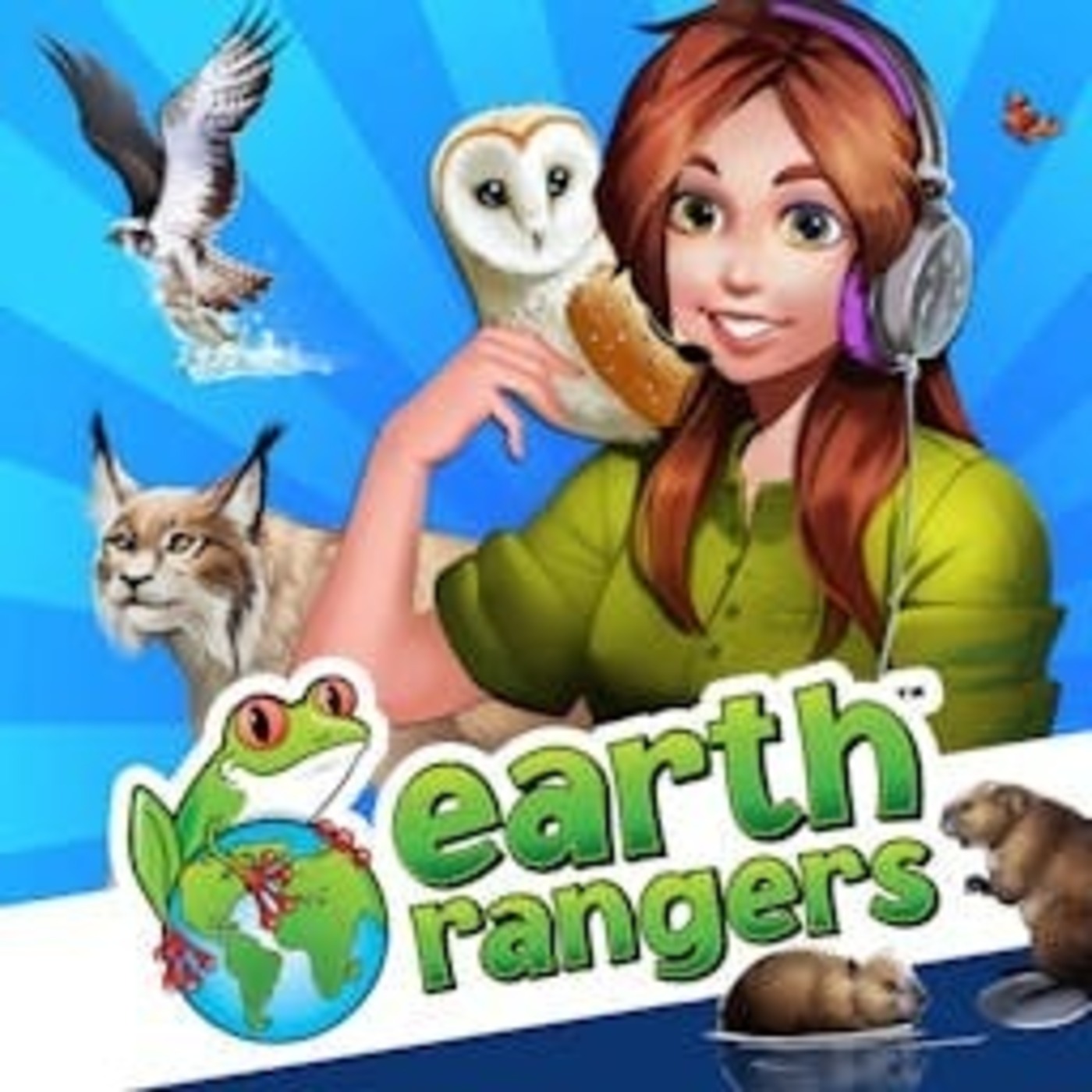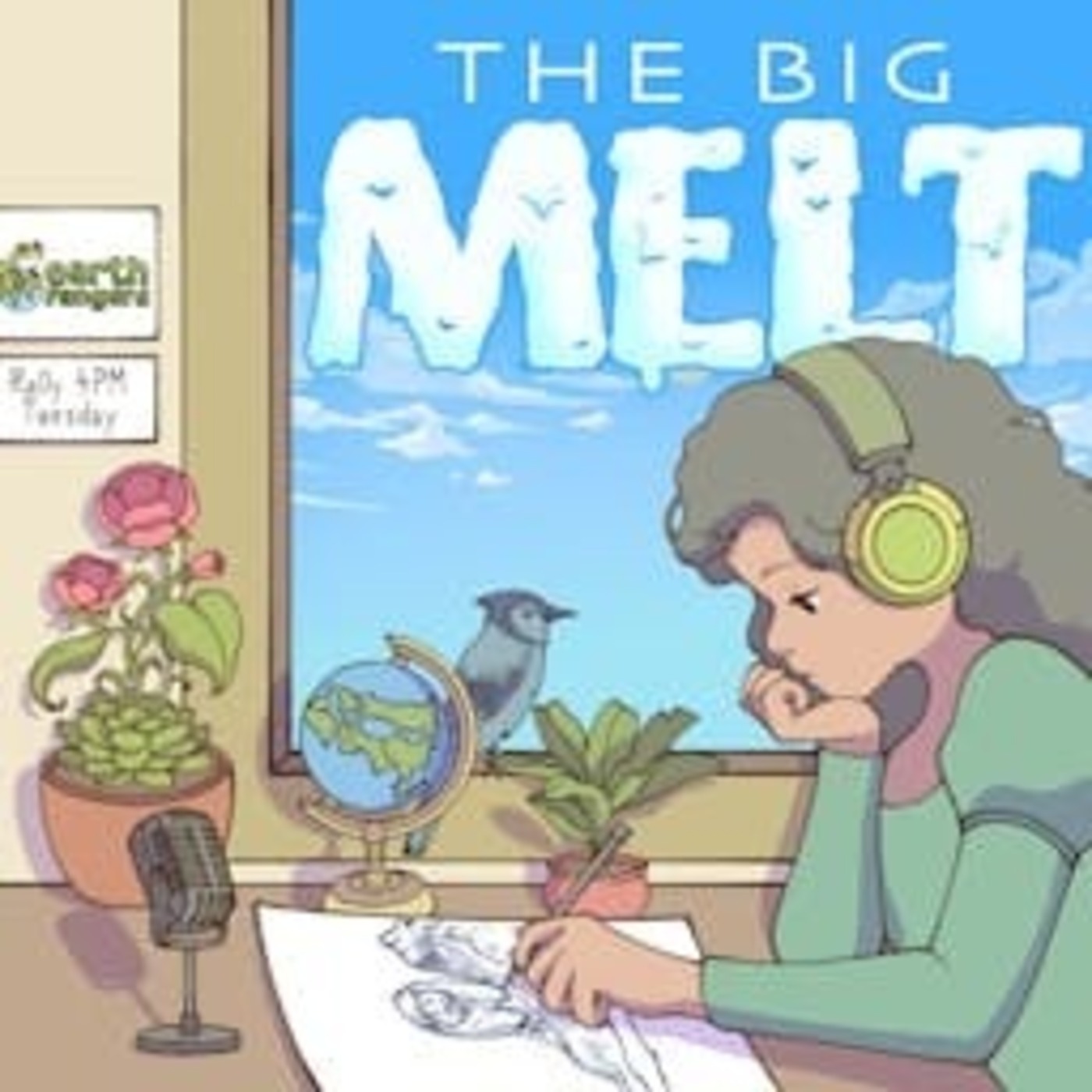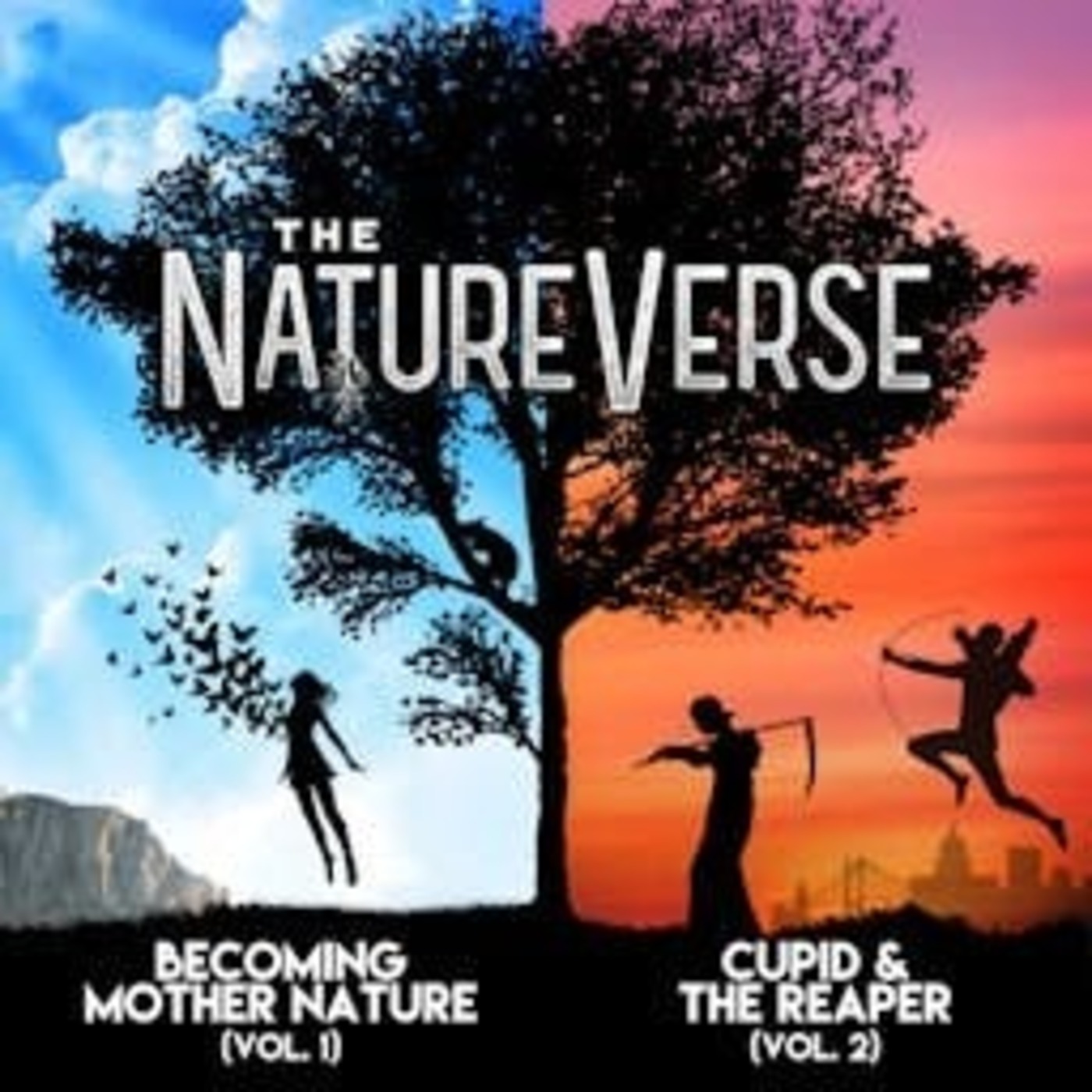
Kingdom: Animalia - A Zoology Podcast for Kids
This is a for-kids-(and adults)-by-kids-(and chickadees) animal podcast. In every regular episode, your host, Devon, and podcast-overthrowal-plotting chickadee co-hosts, Chet and Cap, will dive into all the facts about one species of animal with jokes, fun facts, and quizzes along the way. Every third-ish episode is our game show, Animalia Fake!, in which there are three rounds with four outrageous animal facts; one of those facts is so outrageous it’s an Animalia Fake (it’s not true), and you have to guess which it is.
You can send in questions and episode suggestions to animals@kapods.org, and my website is https://kapods.org/animals. So what are you waiting for? Let’s explore this amazing Kingdom: Animalia.
New episodes every 1–2 months.
Kingdom: Animalia - A Zoology Podcast for Kids
April Fools 2023
Five animals: four real, one fake. Which are real, and which tried to April Fool ya?
______________________
April Fools’ Day is a time of tricks, pranks, and, of course, fools. Today your host, Devon, and co-hosts, Chet and Cap, will talk about five animal species: the Sea Pig, Hammerhead Worm, Hing-toothed Macaque, Leaf Sheep, and Star-nosed Mole, one of which is fake, and you’ll have to guess.
The reveal is in a bonus episode that was published one week later. Even though the deadline has passed for submitting your guess, you can still try to guess which it is before listening to it! And be sure NOT to share any of the facts from today’s episode until you know which animal is fake. Happy April Fools’ Day!
Links:
If you have any questions, comments, episode suggestions, or verification that I’m not just talking into the void, please send them in (links below)! It really means a lot. Also, if you like this podcast, please share it with someone else who might!
Get in Touch: animals@kapods.org or kapods.org/contact
Visit My Website: kapods.org/animals
Follow in Your Favorite App: kapods.org/animals/follow
**Psst! Hey, you! It’s Chet and Cap! Do you have any questions for us? Just head over to kapods.org/acb and send a voice message or email with your questions, and we’ll answer them on an Ask the Chickadee Brothers episode of this podcast!**
Until next time, keep exploring this amazing Kingdom: Animalia.
This podcast is made by Kingdom: Animalia Podcasts.
SOUNDS: [Theme music starts, and then slows and stops] [The Chickadee Brothers Podcast theme plays]
SOUNDS: [Scratch Things]
BACKGROUND: [Hip-Chickadee-Hop starts]
CHET: Chicka Hellllooo podcassst Chicka listeners!!
CAP: Chicka Hello and Chicka welcome to…
CHET+CAP: Chicka The Chickadee Chicka Brothers Podcast!
CHET: Chicka Woohoo!
CAP: Chicka Yeah!
CHET: Chicka The show Chicka is now Chicka ours!
CAP: Chicka Here’s what Chicka happened: Chicka Devon left Chicka us a Chicka letter in Chicka our mailbox Chicka and… Chet, Chicka can you Chicka read it?
CHET: Chicka Sure!
BACKGROUND: [Music pauses]
CHET TO DEVON: {Chicka} Dear Chet {Chicka} and Cap,
DEVON: All of your interrupting and pestering has finally gotten to me. I give up. I hereby relinquish the ownership of Kingdom: Animalia - A Zoology Podcast for Kids to you two. Use it wisely.
DEVON TO CHET: {Chicka} Sincerely, Devon.
BACKGROUND: [Music continues]
SOUNDS: [Airhorns]
CAP: Chicka So now Chicka the show Chicka is ours.
CHET: Chicka We got Chicka it today Chicka on April Chicka first. Chicka Something’s up Chicka with today, Chicka but I Chicka just can’t Chicka place it. Chicka Alrighty. Chicka Today on Chicka the April Chicka first episode Chicka of--
BACKGROUND: [Music ends]
SOUNDS: [Door opens and slams shut]
DEVON: Kingdom: Animalia - A Zoology Podcast for Kids! April Fools!!
CHET: Chicka Ah!
CAP: Chicka Devon!
DEVON: Ha haa, I got you so good! You should’ve seen the look on your faces! Heheh!
CAP: Chicka W-Wha?
DEVON: It was a prank! I didn’t hand it over to you! Pow!
SOUNDS: [Explosion] [Airhorns]
CAP: Chicka But… but Chicka school!
DEVON: Oh, but today’s Saturday! I changed your calendars so I could barge in like I just did! Kind of a double-prank!
SOUNDS: [Double Explosion]
CAP: Chicka I never Chicka thought you Chicka had it Chicka in you, Chicka Devon.
DEVON: Let’s just roll the KA theme now cause you didn’t. Haha!
CHET: Chicka Rrrr…
CAP: Chicka Arrr…
SOUNDS: [Theme music]
BACKGROUND: [Cricket song slowed down]
DEVON: Hello and welcome to Kingdom: Animalia - A Zoology Podcast for Kids! I’m your host, Devon, and these are my co-hosts,…
CHET: Groaning: …Chicka Chet…
CAP: Groaning: …Chicka and Cap.
DEVON: Hehe. So today’s an April Fools special. There will be five crazy, unbelievable animals,…
SOUNDS: [Five “dings”]
DEVON: …one I just made up,…
SOUNDS: [Wrong Buzzer]
DEVON: …and you’ll have to guess which it is!
SOUNDS: [Mystery Detective sting]
DEVON: Just be sure not to believe any of the facts on today’s episode, because one fifth of them aren’t real. So let’s get going! Today on episode seven of Kingdom: Animalia, we’re learning about the Sea Pig, Scotoplanes globosa; Hammerhead Worm, Bipalium fuscatum; Hing-toothed Macaque, Macaca digitodens; Leaf Sheep, Costasiella kuroshimae; and Star-nosed Mole, Condylura cristata. One of which isn’t real, and you’ll have to guess which. Enjoy and pay attention.
SOUNDS: [Snap with reverb]
BACKGROUND: [Crickets end]
DEVON: Let’s start with the first animal.
SOUNDS: [Ding-ding 1]
DEVON: Animal one is the Sea Pig. You know what a Tardigrade, or Water Bear, or Moss Piglet—whichever name you choose—looks like? Round; circular head; eight chubby, short legs? So imagine a tardigrade. Then scale them up to five point nine to seven point one inches or fifteen to eighteen centimeters long. Then replace the eight chubby legs with five to seven pairs (or ten to fourteen individual) long tube feet. Tube feet are little hydro-powered tubes that Sea Pigs and other echinoderms (sea stars, sea urchins, etc) use as legs. In most echinoderms they are short, but Sea Pigs’ are extra-long, so much so that they look like regular legs. They use these special tube feet to suspend their bodies above mud. Then add four long, antenna-like strands called papillae (very different from those on octopuses) above each of the “four corners”, so to speak, of their back. They use these to probe and search for food. Then, circularly around the mouth, add a bunch of tiny tentacles. Lastly, make their skin slightly clear and flush it a light pink or orange. Sea Pigs live in oceans all around the--
CAP: Chicka Cap!
DEVON: No. All around the world. They live in abyssal to hadal depths (those are levels in the ocean), including in underwater trenches. Specifically in depths of twenty-two hundred point five to seventy-four hundred three yards or twenty-one hundred to sixty-seven hundred seventy meters under. They are one of the most abundant and commonly seen seafloor animals. They mainly eat decomposing material. They search using their papillae, sniffing out their food, yes, they use them to smell, and forage for it with their tentacles. They can gather in huge “herds” when there are large carcasses such as whale falls. Mmm… dead whale. I guess. They usually only get into groups of ten to thirty, the largest group recorded having been six hundred Sea Pigs strong. They are actually very picky about what compost to eat, and won’t eat anything that’s been sitting out for one hundred or more days. Now, who’s ready for some fun facts?
CHET: Chicka I guess. Chicka Fact number Chicka one:
DEVON: In their scientific name, Scotoplanes globosa, the species name, globosa, means “spherical”, referring to their round bodies.
CHET: Chicka Fact number Chicka two:
DEVON: Researchers have seen numerous juvenile King Crabs hiding from predators under Sea Pigs! It is currently unknown what the Sea Pigs get out of this.
CHET: Chicka Fact number Chicka three:
DEVON: Though they might not look it, Sea Pigs are… A), Sea Slugs, B), Sea Cucumbers, or C), Sea Worms?
CHET: Chicka B!
CAP: Chicka B!
DEVON: Drumroll please, Chet…
CHET: Chicka Alrighty!
BACKGROUND: [Drumroll]
DEVON: The answer is… B! You’re both correct!
SOUNDS: [Correct]
CHET: Chicka Woohoo!
CAP: Chicka Yeah!
DEVON: Congrats! Now…
CHET: Chicka Fact number Chicka four:
DEVON: There are actually multiple species of Sea Pig. Right now we’re talking about Scotoplanes globosa, the others are S. angelicus, and S. mutabilis.
SOUNDS: [Theme music clip 1]
DEVON: Onto animal number two.
SOUNDS: [Ding-ding 1]
DEVON: The Hammerhead Worm. The worm’s name comes from the shape of their head, which resembles that of a hammerhead shark.
SOUNDS: [Jaws theme clip (PDT)] [Splat]
DEVON: It’s rounded and looks like a spade. They have snake-like bodies that grow twelve to fifteen inches or thirty-one point four eight to thirty-eight point one centimeters. They are typically light brown with dark stripes going down their backs, for the entire length of their body. They slide around on the ground on a trail of mucus, moving their head side to side. Though they can reproduce sexually, they often do it asexually, in which a small piece of their back end pops off and turns into a new worm. Since they kind of clone themselves they kind of live forever, though the original body does die. They are commonly found in forests and gardens in subtropical to tropical regions, hiding under leaves, logs, shrubs, and rocks; just anywhere out of the sun. They are native to southeast Asia in Vietnam, but are invading Europe and North America (mainly the US and Canada) thanks to humans introducing them. They are indeed invasive, and will feed on native earthworms and other worms responsible for composting in North America and Europe. They will also eat slugs, snails, and insects. I’m going to explain how they eat, so prepare to be grossed out.
CHET: Chicka Devon briefed Chicka us for Chicka this. Chicka You shouldn’t Chicka be eating Chicka while listening.
DEVON: Yeah. First they will…
SOUNDS: [Oozing]
DEVON: …ooze around in search of a tasty worm, slug, or snail. They have special chemoreceptors (cells that sense chemicals) to sense the mucus of their worm, slug, or snail prey. Then… they strike!
SOUNDS: [Splat]
DEVON: Or more “splat”. They will coat their prey in sticky slime, keeping them from escaping. Then, they spit out digestive enzymes, liquefying them.
SOUNDS: [Oozing]
DEVON: Lastly, they will regurgitate part of their throat and suck in the tasty, slimy smoothy, directly to their gut. Hammerhead Worms will not only eat earthworms, but other Hammerhead Worms!
SOUNDS: [Bum, bum buumm!] [Splat]
CHET: Chicka Ick! Chicka I hope Chicka this one Chicka is fake!
DEVON: That’s right, I haven’t even told Chet or Cap which is fake!
CHET+CAP: Chicka **Groan**
DEVON: Now, who’s ready for some fun facts?
CAP: Chicka Fact number Chicka one:
CHET: Chicka Wait what? Chicka Cap?
DEVON: You two’ll take turns today, since there are five animals. Y’know, to be good on your syrinxes (those are the bird equivalents of voices boxes—larynxes).
CHET: Chicka Okay.
DEVON: Let’s restart.
CAP: Chicka Fact number Chicka one:
DEVON: Their scientific name means “Brown Double spade”. For Bipalium, “Bi” means “two” and “Pala” means “shovel” or “spade”; this referring to their looking like a pickax or “double spade”. Fuscatum means “brown”, referring to this species’ coloration.
CAP: Chicka Fact number Chicka two:
DEVON: As slightly hinted at, Hammerhead Worms don’t like being dry. If faced with dryness, they will coil into a tight ball and coat themself in a thick layer of mucus.
SOUNDS: [Splat]
CAP: Chicka Fact number Chicka three:
DEVON: Their… mucus…
SOUNDS: [Splat]
DEVON: …is toxic made to ward off predators, but can also be dangerous to humans and pets. It contains a neurotoxin (a toxin that affects your nervous system) called tetrodotoxin that’s also present in pufferfish. A human eating or touching the slime can cause irritation to the skin, abdominal pain, vomiting, numbness, and headaches.
SOUNDS: [Theme music clip 2]
DEVON: Now onto animal three:
SOUNDS: [Ding-ding 1]
DEVON: The Hing-toothed Macaque. They look like your typical macaque monkey and are small. Males grow up to--
CAP: Chicka Cap caps Chicka long!
DEVON: No. Males grow up to three point five feet or one point o six meters tall with a seven inch or seventeen point seven centimeter long tail, and females are three feet or point nine meters tall and have a six inch or fifteen centimeter long tail. They are furry and light brown overall, with a pink, furless face, feet, and hands; black ears; a shaggy brown back; and a white belly. As their name suggests, they have large canines with the two upper being hinged like those of a viper. I’ll get to that soon. They are highly social, and will live in large, tight knit troops who sleep together in the trees and forage together on the ground. They live on the island of Borneo in rainforests, but occasionally will live along the beach. They are endangered, on the IUCN red list as critically endangered, and are extremely rare, which partially is why they are very little known despite their amazingness. They will eat the Giant Bornean Red Crabs, closely related to the Christmas Island Red Crabs of Christmas Island. They are very large, red and black crabs—about the size of the palm of your hand. Very nutritious. Now, who’s ready for some fun facts?
CHET: Chicka Fact number Chicka one:
DEVON: Their scientific name, Macaca digitodens, translates to “Finger-tooth monkey” in latin, referring to their teeth, which I’ll cover soon. They have two other names, aside from “Hing-toothed Macaque” and “Macaca digitodens”. They have an alternative common name, the “Finger-tooth Macaque”, referring to their movable teeth, and their Malay name, Monyet gigi ular, translating to “Snake-tooth Monkey”, referring to their viper-like teeth.
CHET: Chicka Fact number Chicka two:
DEVON: Here’s how they eat using their teeth: First they will walk around on the jungle floor, usually alone or in pairs, using their noses which are three times better than those of bloodhounds, to sniff out their prey—crabs. Once they find the crab, they will quickly grab them in their hands then pin them between their canines, claws sticking out, so the crab can’t pinch them. Then they will methodically scrape their top canines back and forth across the top of the shell until they have two gashes on top of the shell. They will then shove their canines in, killing the crab. Next they will turn the crab sideways in their mouth and will do the same on the sides, carving out a square on the shell. Then they will use their teeth, which are actually opposable like our thumbs to our fingers, to pry off the square, flip it off, and pin the crab back down before it falls out. Then they will grab the crab in their hands to scrape out the juicy insides with their teeth to eat.
SOUNDS: [Theme music clip 3]
DEVON: Now onto animal número cuatro (that’s animal number four in Spanish):
SOUNDS: [Ding-ding 1]
DEVON: The Leaf Sheep. First imagine a dense bunch of unripe bananas. Then put a little purple dot at the end of each banana. Then replace the little stem at the top with a little white head. Next add two purple rabbit ears; two black, poppyseed-looking, and close together eyes; and two pink specks at the bottom that look like nostrils. In the center of all the bananas, add a little, white body. And then… shrink this down to point two inches or five millimeters. This is pretty much what a Leaf Sheep looks like. The “ears” are actually sensory appendages called rhinophores. They are covered in fine hairs that sense chemicals in the water, allowing them to find food. The spots aren’t actually nostrils either. They are aquatic and native to the coasts of Japan, Indonesia, and the Philippines. Their primary diet is marine algae. Now here’s where it gets weird. They not only look like plants, but they can also photo…
CAP: …Chicka capasize!
DEVON: Nu-uh. It’s something even crazier. They not only look like plants, but they can also photosynthesize like plants! That’s right, they can turn sunlight into energy!
CHET+CAP: Chicka **Gasp!**
CROWD: Gasp!
SOUNDS: [Radio signal connect] [Click]
BACKGROUND: [Commercial music]
DEVON: Are you a Leaf Sheep listening?
LEAF SHEEP: Yeah.
DEVON: Do you want to go long periods of time without eating?
LEAF SHEEP: Yeah!
DEVON: Well do we have the technique for you!
LEAF SHEEP: What is it?
DEVON: It’s called <Photosynthesis™><reverb>.
LEAF SHEEP: Tell me more!
DEVON: First you eat some algae.
LEAF SHEEP: Nom nom.
DEVON: Then you retain the chloroplast, a plastid that contains chlorophyll.
LEAF SHEEP: Say what?
DEVON: Let me explain. Plastids are types of cells in plants and algae. Chlorophyll is a green compound that plants and algae use to photosynthesize. You just have to suck it out of your algae and retain it in your body through a process called Kleptoplasty™, and you can photosynthesize! Eat the sunlight!
SOUNDS: [Sparkle]
DEVON: You can even use this to go for months without regular food.
LEAF SHEEP: Ooo.
DEVON: You can use our trademarked technique, Kleptoplasty™, at home today. Side effects include being called “solar-powered sea slugs” and bioluminessing, in other words, glowing.
BACKGROUND: [Music ends]
SOUNDS: [Click]
DEVON: Now, who’s ready for some fun facts?
CAP: Chicka Fact number Chicka one:
DEVON: In their scientific name, Costasiella kuroshimae, kuroshimae (I know I’m not pronouncing that correctly )refers to Kuroshima, the Japanese island where Leaf Sheep were discovered by scientists. They are also called “Leaf Slugs” and “Salty Ocean Caterpillars”.
CAP: Chicka Fact number Chicka two:
DEVON: Leaf Sheep are actually a… drumroll please…
SOUNDS: [Drumroll]
DEVON: …a species of… Sea Slug! As I just kind of mentioned. Sea Slugs are very different from land slugs, actually, and come in many different shapes and sizes like the Leaf Sheep.
SOUNDS: [Theme music clip 4]
DEVON: Now onto our fifth and final animal.
SOUNDS: [Ding-ding 1]
DEVON: The Star-nosed Mole. With the familiar name ‘mole’ they may seem normal. That is far from the truth. I’ll get to that soon. The Star-nosed Mole is, as you suspected, a mole. They have jet black fur, and wide forefeet with large claws designed for digging. The bottoms of their feet are pink and bare and they have a long and hairy tail. At the tip of their nose they have eleven pairs of little pink fingerlike tentacles called rays used for sensory purposes. They are diurnal and active throughout the year. They are native to northeastern US and southeastern Canada. They are semi-aquatic (meaning they are partially aquatic (which means they live in the water)) and live in a variety of habitats, as long as they have moist soil.
CHET: Chicka Moist.
DEVON: They prefer areas that have poor drainage, such as coniferous and deciduous forest, clearings, wet meadows, and wetlands such as marshes and peatlands. But they’re occasionally found in dry meadows, up to thirteen hundred twelve point three feet or four hundred meters from water. Star-nosed Moles are carnivores, specifically vermivores, meaning they eat worms, though they’ll sometimes eat insects, mollusks, aquatic crustaceans, and even small fish. During the wintertime, they hunt more underwater, coming in from their tunnels, because the ground is frozen. Now, who’s ready for some fun facts?
CHET: Chicka Fact number Chicka one:
DEVON: In their scientific name, Condylura cristata, “Condylura” means “knob tail”, referring to a knob on their tails depicted in bad drawings, which they don’t actually have; and “Cristata” means “crest”, referring to their star-shaped nose.
CHET: Chicka Fact number Chicka two:
DEVON: Let’s talk about their noses.
CAP: Chicka Does he Chicka really know Chicka about their Chicka noses?
CHET: Chicka Oh, yeah, Chicka he nose.
SOUNDS: [Rimshot]
DEVON: Did you really just do a rimshot for your own joke?
CHET: Chicka Yeah?
DEVON: Oh, whatever. So let’s talk about their--
CAP: Chicka Caps!
DEVON: Nope. Their noses. The quote on quote “tentacles” or “fingers”, as I said are called “rays”, since they look like a sun all together. As I also said, there’re eleven pairs, meaning there’re twenty-two in total. Covering all of them they have a total of twenty-five thousand little touch receptors, called Eimer’s organs, with which they use to feel around. This gives them a really good sense of touch. The receptor got its name because they were first described by a German zoologist named Theodor Eimer in eighteen seventy-one. Some other mole species possess Eimer’s organs, though they’re not as advanced or numerous as in Star-nosed Moles. The organs partially became so highly evolved because the Star-nosed Mole is functionally blind. The rays were long thought to be electroreceptors (receptors for electricity). They can use them to identify and devour their prey in as little as one hundred milliseconds (though on average two hundred twenty-seven). In just eight milliseconds their brain can identify if the prey is edible or not. They can touch, eat, and move on so quickly that they might not even notice and come back to realize that they actually ate it!
CHET: Chicka Fact number Chicka three:
DEVON: They are great in the water. First is they can smell underwater by exhaling an air bubble onto objects or scent trails and then inhaling it back through their nose, carrying the scent with it. Second is they can swim very well and can stay under for up to thirty seconds.
DEVON: That’s all. Now it’s time for YOU to guess. Here’s how it works: First think of which animal you think isn’t real. Then if you want your answer to be featured if you get it right, send it in using the contact form on the page for this episode which is at kingdomanimaliapod.com/episodes/aprilfools2023 (where you can also read the episode transcript), or you can email us at contact@kingdomanimaliapod.com subject line “April Fools 2023” with your guess and permission for me to say your name. The deadline is next Saturday morning, and that day I’ll release a bonus episode revealing the answer, shouting out the correct guessers, and going over the fake facts. As I said, don’t go around telling people the facts from this episode until you know. That is all. Send in your guesses, and if you get it right I’ll shout you out.
BACKGROUND: [Cricket song slowed down starts]
DEVON: So until next time, always check your animal facts (but don’t check these! The answer will be next week, when I’ll also release the works cited page!), and keep exploring this amazing Kingdom:… Animalia. Bye!
CHET+CAP: Chicka Bye!
CAP: Chicka We will Chicka get revenge!
-Ends-
Podcasts we love
Check out these other fine podcasts recommended by us, not an algorithm.

Where Are the Chickadee Brothers?
Kingdom: Animalia Podcasts
Amazing Wildlife: A San Diego Zoo Podcast
iHeartPodcasts
Earth Rangers
GZM Shows
Short Wave
NPR
Unexplainable
Vox
Science Friday
Science Friday and WNYC Studios
The Big Melt
Gen-Z Media
How Wild
NPR
Six Minutes
GZM Shows
Radiolab
WNYC Studios
The Big Fib
GZM Shows
The Natureverse: Becoming Mother Nature
GZM ShowsThe Show About Science
Nate | The Company Making Podcasts
Tai Asks Why
CBCCool Facts About Animals
Cool Facts About Animals Podcast

